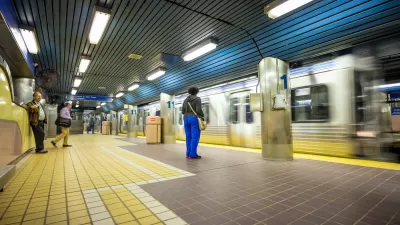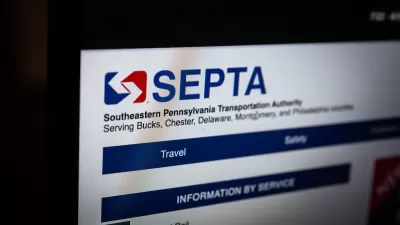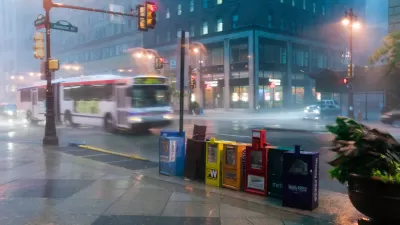Ridership on the nation's commuter rail services has plummeted more than other forms of transit during the pandemic. Serving a more affluent, professional ridership, commuter rail is looking more likely to face long-term cuts after the pandemic.

Patricia Madej writes about the uncertain future of commuter rail in light of the changing patterns of working and living during the pandemic, and the potential that some of these changes could be long lasting.
Madej summarizes the daunting challenges facing the Southeastern Pennsylvania Transportation Authority (SEPTA) in particular:
With ridership down about 85% from pre-pandemic levels, SEPTA Regional Rail is essentially running empty trains, and it’s clear that many of its suburban riders won’t return to five-day-a-week schedules given the appeal of white-collar telework. To sustain and grow Regional Rail ridership, transportation experts say, it should try to appeal to those it hasn’t in the past because of pricey fares and less frequent service. That was true before COVID-19 but may be more necessary now than ever, with the identity of Regional Rail turned on its head.
The article by Madej includes soundbites from several experts about how SEPTA might plan for more equitable service design in the post-panemic future. Megan Smirti Ryerson, associate dean for research at the University of Pennsylvania Stuart Weitzman School of Design, for example, says SEPTA should better integrate Regional Rail service with SEPTA bus, trolleys, and subway service.
“Now is the time to prioritize the needs of people of color, essential workers, and particularly our communities that have been significantly, economically hurt by the pandemic,” Ryerson said. “Transit is an opportunity to lift people up, to give them access to opportunities that they didn’t have before.”
This isn't the first time during the pandemic that commuter rail has faced scrutiny as potentially the most disposable mode of public transit given the declining transit ridership of the pandemic and the likelihood that working from home and migration to suburbs might have a long-term impact on ridership on commuter rail transit.
In November, for example, emergency service cuts at the Massachusetts Bay Transportation Authority (MBTA) cut commuter rail service in favor of bus service, in a move predicted at the time to be a feature of post-pandemic transit planning.
FULL STORY: Without commuters, what will happen to SEPTA Regional Rail?

Alabama: Trump Terminates Settlements for Black Communities Harmed By Raw Sewage
Trump deemed the landmark civil rights agreement “illegal DEI and environmental justice policy.”

Planetizen Federal Action Tracker
A weekly monitor of how Trump’s orders and actions are impacting planners and planning in America.

The 120 Year Old Tiny Home Villages That Sheltered San Francisco’s Earthquake Refugees
More than a century ago, San Francisco mobilized to house thousands of residents displaced by the 1906 earthquake. Could their strategy offer a model for the present?

Ken Jennings Launches Transit Web Series
The Jeopardy champ wants you to ride public transit.

BLM To Rescind Public Lands Rule
The change will downgrade conservation, once again putting federal land at risk for mining and other extractive uses.

Indy Neighborhood Group Builds Temporary Multi-Use Path
Community members, aided in part by funding from the city, repurposed a vehicle lane to create a protected bike and pedestrian path for the summer season.
Urban Design for Planners 1: Software Tools
This six-course series explores essential urban design concepts using open source software and equips planners with the tools they need to participate fully in the urban design process.
Planning for Universal Design
Learn the tools for implementing Universal Design in planning regulations.
Clanton & Associates, Inc.
Jessamine County Fiscal Court
Institute for Housing and Urban Development Studies (IHS)
City of Grandview
Harvard GSD Executive Education
Toledo-Lucas County Plan Commissions
Salt Lake City
NYU Wagner Graduate School of Public Service





























